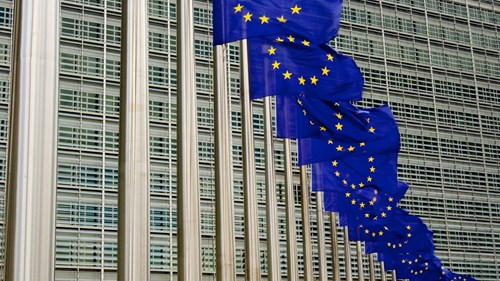Antitrust authorities turn their attention to algorithms in 2018
In 2018, the growing use of algorithms for dynamic pricing in the digital economy will be in the focus of the European antitrust authorities’ attention more than ever as a challenge for effective competition. The topic fits into the greater framework of the authorities’ increasing observation and investigation of digital business segments, as the recently initiated sector investigation into prices comparison websites by the German Federal Cartel Office shows, as well as antitrust proceedings in e-commerce and announcements by authorities that they will look more closely into the phenomenon of Big Data.
Recently the President of the German Federal Cartel Office, Andreas Mundt, and others, emphasised in connection with the price trend in the German aviation market in December 2017 that companies cannot hide behind the algorithms they use to set prices with regard to their antitrust responsibility. In March 2017, the EU Commissioner for Competition, Margrethe Vestager, had made similar remarks and clarified that companies will be held responsible for competition-harming effects of the system they used to set prices automatically. Looking beyond competition policy, the Commissioner even sees in the use of algorithms for automated decision-making the risk that democracy could be ‘undermined’.
However, it is still unclear to what degree the existing antitrust toolkit allows antitrust authorities to take action against supposedly damaging impacts of the use of (pricing) algorithms. There is also heated debate about where the boundaries of liability for algorithms and artificial intelligence (AI) lie as a whole.
In any case, intervention by the antitrust authorities is indisputably possible where pricing algorithms are used (as an ‘extended arm’) to implement anticompetitive agreements previously arranged between people (infringement of the prohibition of cartels, Article 101(1) TFEU) or abusive market conduct decided by people (abuse of a dominant market position, Article 102 TFEU). Antitrust authorities have recently imposed fines on companies in such cases – relating both to agreements between competitors and cases of vertical price fixing – while further cases are still at the stage of preliminary proceedings. Antitrust liability is also conceivable when several competitor have transferred their price-setting to an identical third party (the algorithm provider) and it must have been obvious to them that this would lead to an upwards alignment of prices.
By contrast, legal difficulties arise when price-setting algorithms reinforce potentially competition-damaging effects of conduct which normally do not violate antitrust law. This applies in particular to ‘conscious parallelism’ in which companies adjust their prices to one another without this adjustment being based on an agreement or another arrangement (e.g. if a company decides for itself always to follow the price increases of another company and programs the pricing algorithm it uses correspondingly). Such conduct would not be forbidden in the ‘offline’ world either, but of course, given the technical components (speed of adjustment in fractions of seconds and seamless observation of competitor prices) and possibly harmful effects on the markets, it raises the question of whether this is admissible under antitrust law in the online segment too.
Apart from these legal questions, difficulties also arise on the factual level if the algorithm is so complex that it is very hard to prove anticompetitive conduct by the companies concerned. This is, for example, shown by the Google proceedings in which the European Commission is reliant on external help to monitor Google’s promises regarding its algorithms. These difficulties in providing proof will further increase as the price-setting mechanisms move towards ‘deep learning’ and AI. It is conceivable that in the future intelligent automatic price-setting systems lead to a de facto price-fixing between competitors, even without any human input (known as robot cartels).
Therefore, there is discussion of whether in the medium term the trends described could also require regulatory intervention and a statutory framework. A change in the burden of proof of the existence of an anticompetitive agreement to the detriment of companies using algorithms would also be conceivable, as well as strict liability for anticompetitive effects of pricing algorithms with corresponding monitoring obligations. An additional possibility could be the enactment of statutory requirements for companies to develop pricing algorithms that rule out anticompetitive behaviour and make price decisions understandable for antitrust authorities (known as compliance by design).
When using pricing algorithms and other digital applications in their business, companies are well advised to already take measures to comply with antitrust law and to be aware of how the systems used exactly work since one thing is sure: ignoring possible effects of algorithms does not protect against antitrust penalties. Commissioner Vestager clarified this back in March 2017: “Businesses … need to know that when they decide to use an automated system, they will be held responsible for what it does. So they had better know how that system works.”
Well
informed
Subscribe to our newsletter now to stay up to date on the latest developments.
Subscribe now







